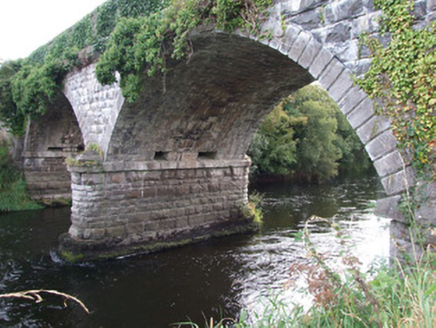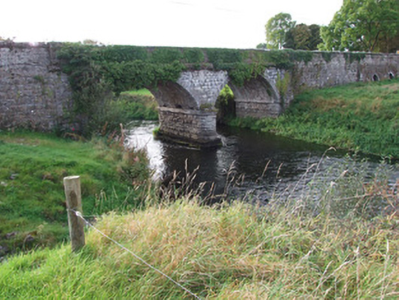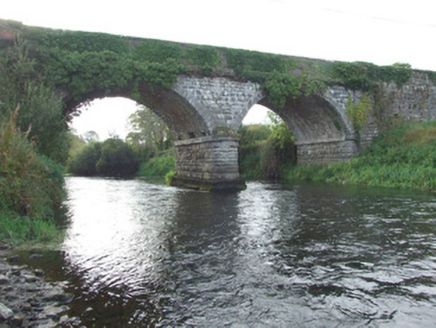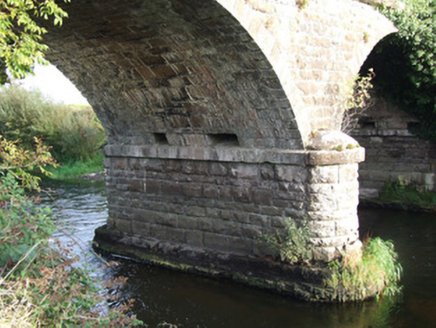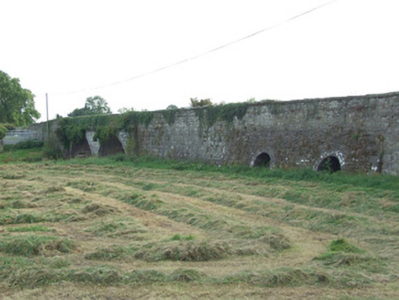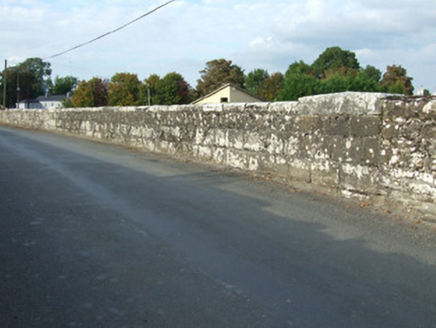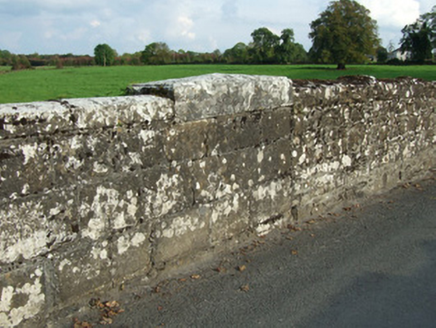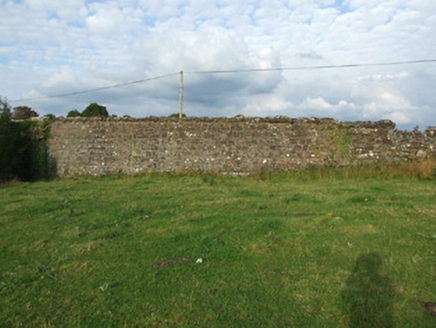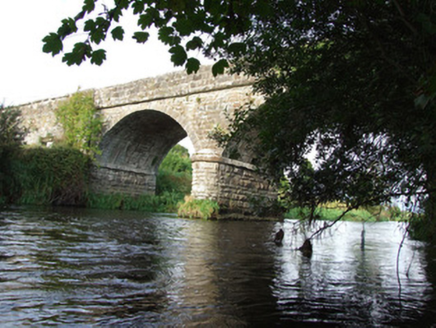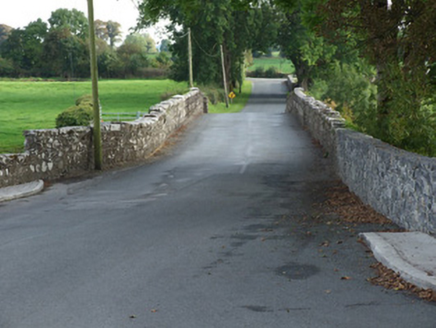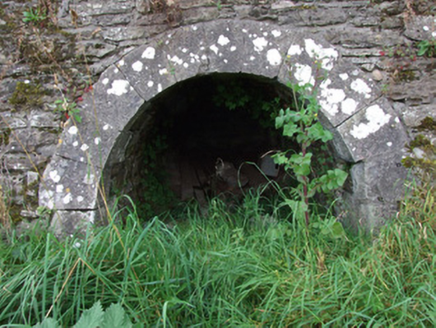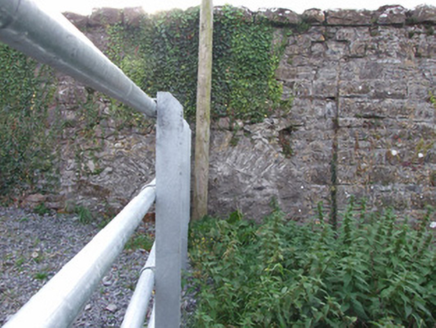Survey Data
Reg No
13402347
Rating
Regional
Categories of Special Interest
Archaeological, Architectural, Technical
Original Use
Bridge
In Use As
Bridge
Date
1740 - 1870
Coordinates
222750, 259175
Date Recorded
02/09/2005
Date Updated
--/--/--
Description
Double-arch road bridge over the River Inny, rebuilt c. 1860, incorporating the fabric of an earlier multiple-arched road bridge, c. 1750 (or earlier), to either side (northwest and southeast). Segmental-headed arches with dressed limestone voussoirs having V-profile margins. Squared rock-faced limestone spandrel walls, abutments and piers to central two arches having cut stone string courses at road deck level and cut stone string courses to impost level of arches/abutments. Squared dressed limestone masonry to barrel. Central pier projects upstream and downstream to form semi-circular cutwater with rounded capstones over. Dressed ashlar limestone construction to parapets having cut stone coping over. Projecting squared rock-faced limestone piers to either end of central double-arch section having cut stone string courses. Ramped rubble limestone walls to either end of central arches (northwest and south), the fabric of an earlier bridge or bridges to site, having rubble stone walls with roughly cut stone coping over parapets. Battered section to the southwest side of bridge, on southwest side, having two small round-headed arches with dressed limestone voussoirs. Blocked arches with rubble stone voussoirs to the southeast. Dressed limestone quoins to either end of battered section. Located to the southeast of Abbeyshrule.
Appraisal
This interesting and imposing bridge contains spans a long-standing crossing point of the River Inny, and contains the fabric of at least two distinct stages of construction. The impressive central two arches date to the mid-nineteenth century. The good quality heavily rock-faced masonry used in the construction of these arches is a typical feature of the many bridges built throughout Ireland by the Board of Works in the mid nineteenth-century, and particularly between c. 1847 - 60, suggesting that they may have been responsible for its construction. The cut stone detailing to this central section contrasts attractively with the rock-faced limestone construction of the spandrel walls, abutment and central pier, which creates an interesting architectural composition and an appealing visual contrast. The two small round-headed arches to the southeast approach ramp are the remnants from an earlier bridge to site. The simple forms of these arches are in contrast to the wide spans of the later central arches, providing an interesting historical insight into the development of bridge technology and engineering over a number of centuries. The wide pier between these two arches suggests that this section probably dates to the first half of the eighteenth century, if not earlier. The location of these two arches, well to the southwest of the present channel of the River Inny, indicates that the river was considerably wider at this point when the bridge was originally built, and that the channel was later dredged as part of drainage works (probably during the mid-nineteenth century, and at the same time the two central arches were built). Lewis, writing in 1837, records that the bridge at ten arches at this time. There is also a blocked arch to the southeast section of the bridge that has radially-set rubble stone voussoirs. This arch may be of considerable antiquity, perhaps even pre-1700 in date. There are a number of references to a bridge here from the mid-to-late seventeenth-century. A bridge is indicated at Abbeyshrule in the Down Survey map of the area dated 1652, prepared by William Petty. Nicholas Dowdall in 1682 described the bridge at Abbeyshrule as 'lately built by Robert Chawpen [Choppin] Esqr.’, and Piers (1684) also noted the construction of a bridge at Abbeyshrule. This bridge is an important element of the built heritage of Longford, and has provided an important river crossing for a considerable period of time.
